Introduction
Together with a large APS-C imaging sensor, the new M10 also features a wide ISO sensitivity range (125 to 12,800 ISO, expandable to 25,600), HD video capture, 3.0-inch touchscreen LCD, built-in flash and Wi-Fi / NFC connectivity. The diminutive design excludes both an electronic viewfinder (EVF) and a hotshoe, however, so it’s not possible to attach either an external flash or an accessory EVF unit to the new EOS M10.
For $449, the EOS M10 kit comes supplied with the new EF-M 15-45mm f/3.5-6.3 IS STM lens that features image stabilization and Canon’s “stepping” autofocus motor for click-free video capture. The new 15-45mm lens also offers a retractable design, which allows the length of the lens barrel to be shortened and locked for easier storage and transportation when not in use. The EOS M10 is also compatible with four other dedicated EF-M lenses, including a wide-angle 11-22mm zoom, a 18-55mm zoom, a fast-aperture prime, and a 55-200mm telephoto zoom. If that’s not enough, compatibility with the full lineup of Canon EF and EF-S lenses is possible via the $50 EF-EOS M lens adapter, opening up a world of creative possibilities on the M10.
In stores now, the new Canon EOS M10 is available in a choice of either grey, white, or black. We bring you a full roundup of its DxOMark sensor scores in our comprehensive review below.
Key features & specifications
- 18Mp (5184 x 3456px) APS-C CMOS sensor
- ISO 125–12800 (25600 expanded)
- HD video 1920×1080 @ 24/25/30 fps
- EF-M lens mount
- 3.0-inch touchscreen LCD
- Hybrid CMOS AF II
- 4.6fps burst shooting
- Built-in flash
- Wi-Fi & NFC connectivity
Canon EOS M10 Measurement: No progress for EOS M sensor scores
The Canon EOS M10’s APS-C sensor achieves an overall DxOMark sensor score of 65 point, comprising a color depth score of 22.2 bits, a dynamic range score of 11.4 EV, and a low-light score of 753 ISO. This indicates no progress for Canon hybrid sensor image quality, with all tested EOS M sensors achieving the same 65-point score.
The EOS M, the M2, and the new M10 all offer essentially the same results for color depth and dynamic range, but the M10 has regressed slightly in the sports category, with its score of 753 ISO compared to the 855 achieved on the M2. In real-world terms, this regression for low-light performance isn’t a huge difference, but it is strange, considering it uses the same size sensor and resolution. It’s interesting to note, too, that sensor scores for the M10 are also slightly behind results from the APS-C sensors in such new Canon DSLRs as the EOS 750 and 760D, which boast scores of 70 and 71 points, respectively.
In terms ranking, an overall DxOMark score of 65 points places the M10 at 165th place for all sensors in our database and only just inside the top 50 for all hybrid camera sensors we’ve tested. Against the highest-ranking APS-C sensor hybrids such as the Samsung NX1 with a DxOMark score of 83 points, the EOS M10’s sensor scores are behind in all categories. In terms of sensor peak performance —that is, where it delivers the greatest quality — against the Samsung NX1, the EOS M10 is over a stop behind for color depth, almost two stops behind for dynamic range, and nearly one stop behind for low-light ISO.
Let’s analyze the results in more detail on the comparison page.
Canon EOS M10 vs. Samsung NX1
We’ve seen a pattern of Canon APS-C sensors lagging behind for dynamic range performance at base ISO (where peak scores are recorded), but gaining ground as ISO sensitivity is increased. This is true of the EOS M10 against the Samsung NX1, too, where at ISO 100 the NX1’s maximum dynamic range of 13.2 EV is almost 2 stops better than the EOS M10 at 11.4 EV. By ISO 800, however, the gap has narrowed to less than one stop, with 11.1 Ev for the NX1 vs 10.4 EV for the M10. The NX1 records good dynamic range of over 10 EV at ISO 1600 compared to ISO 1000 on the M10. At sensitivities above ISO 1600, the gap narrows further, but the NX1 delivers around one-third of a stop better dynamic range consistently between ISO 3200 to ISO 12800.
The pattern isn’t quite the same for color sensitivity, where the NX1 remains fairly consistently ahead of the M10 as sensitivity is increased. At ISO 100, the NX1’s two-bit color advantage narrows only slightly to 1.6 bits at ISO 12800, which equates to one stop better color on the Samsung hybrid. In terms of recording good color of around 20 bits, that one-stop advantage holds true, with the NX1 offering 20.4 bits of color at ISO 800 compared to 19.8 bits on the M10 at ISO 400.
The difference in ISO performance and Signal-to-Noise Ratio (SNR 18%) in printed results is less pronounced, with the two lines much closer on the graphs. That said, the NX1 records SNR 18% over 32dB at ISO 800, compared to the ISO 400 on the M10, as indicated by the yellow dotted line on the graph.
Canon EOS M10 vs. Canon EOS M2 vs. Canon EOS M
If you already own a bag full of Canon EF or EF-S glass for your DSLR and fancy a EOS M hybrid as well, then which one should you go for? Well, in terms of DxOMark sensor scores, it makes no difference at all, as they essentially offer the same image quality both at base ISO and throughout the sensitivity range. So make your decision based on features, size, build, etc., but if you can pick up an original EOS M at a good price on the second-hand market, it boasts the same DxOMark scores as the latest EOS M10 model.
Conclusion
The basic but well-priced Canon EOS M10 adds another option to the crowded hybrid market. For Canon enthusiasts who own a range of EF or EF-S glass, compatibility via the cheap $50 EOS EF-M adapter makes the M10 an interesting proposition. In terms of DxOMark sensor scores, however, results haven’t progressed on new Canon hybrid releases, and the EOS M, the EOS M2, and the new EOS M10 achieve very similar scores. What’s more, despite featuring the same physical-size APS-C sensor as the EOS 750D, scores for EOS M10 are a little behind the results from Canon DSLRs, too. Against the highest-scoring hybrid APS-C sensors in the DxOMark database, the EOS M10 is also off the pace, with models from Samsung and Sony achieving better results at base ISO and throughout the sensitivity range. At just $449, including the new retractable 15-45mm kit lens, the simple and compact EOS M10 will certainly appeal to some consumers, but for a little more money there’s better image quality available in the hybrid market.


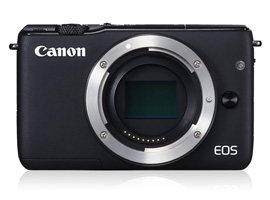




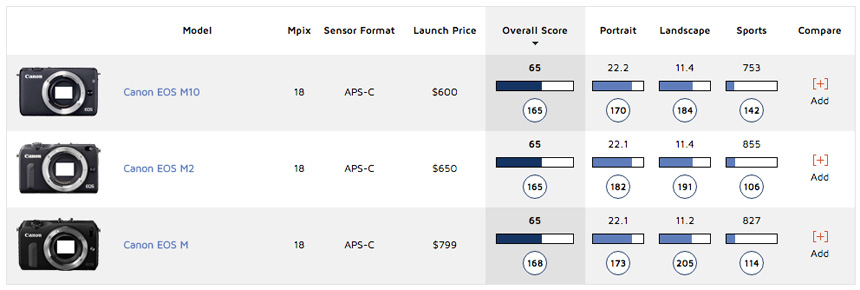
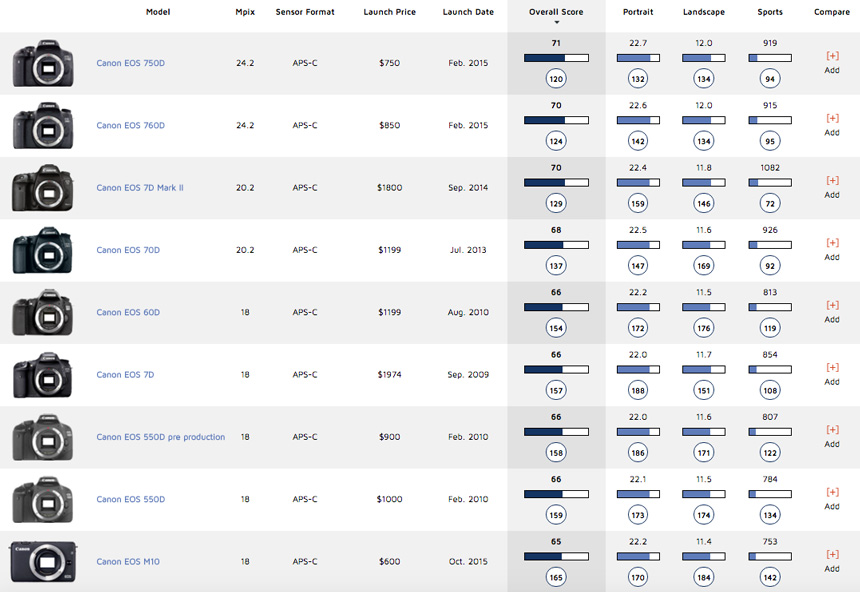
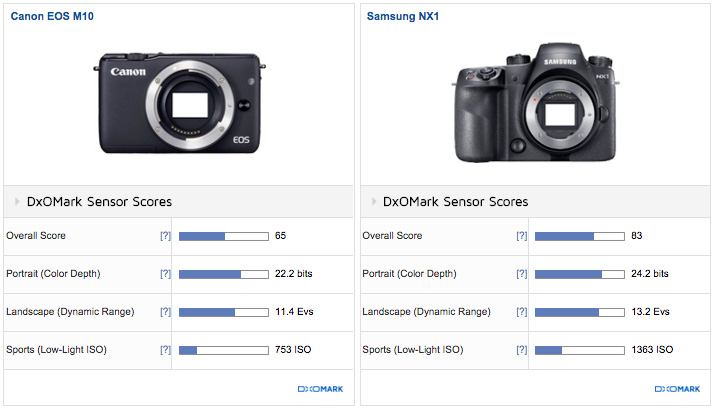
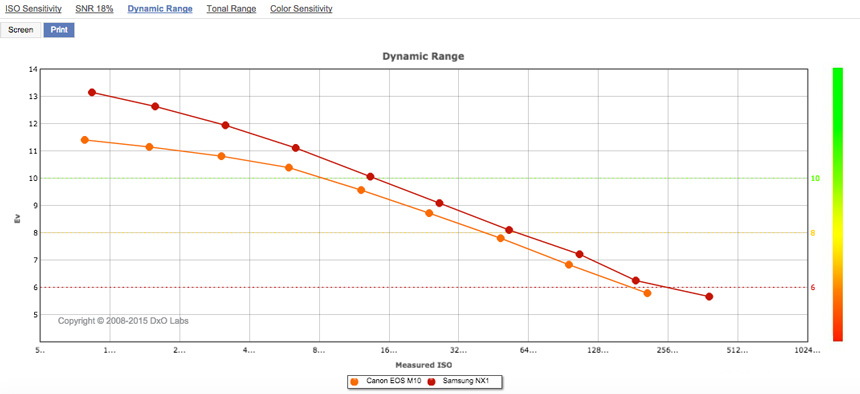
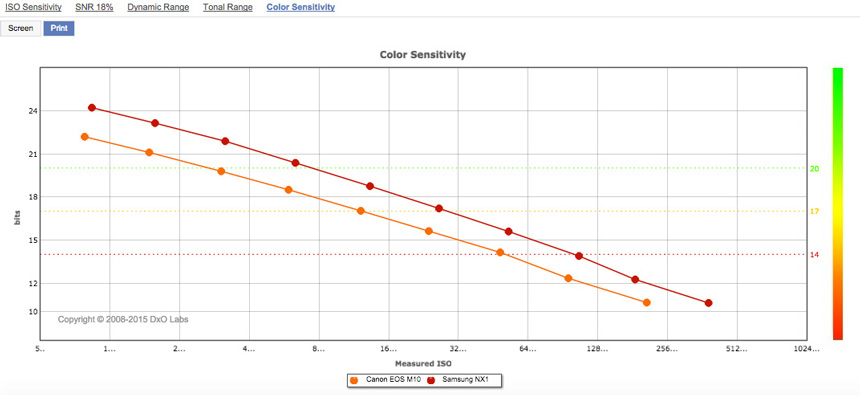
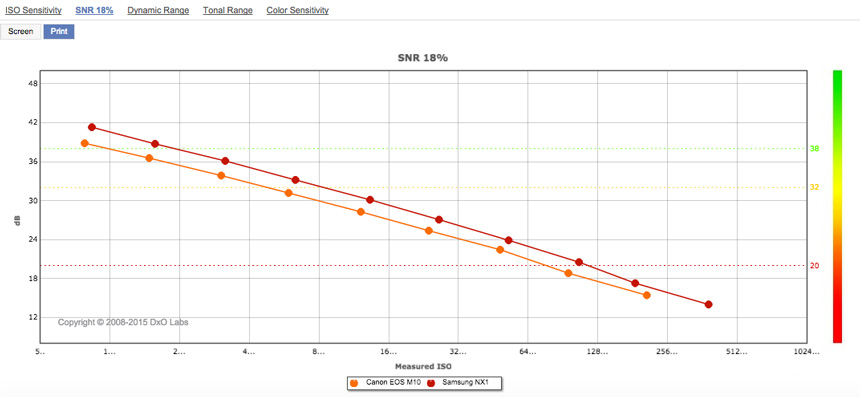
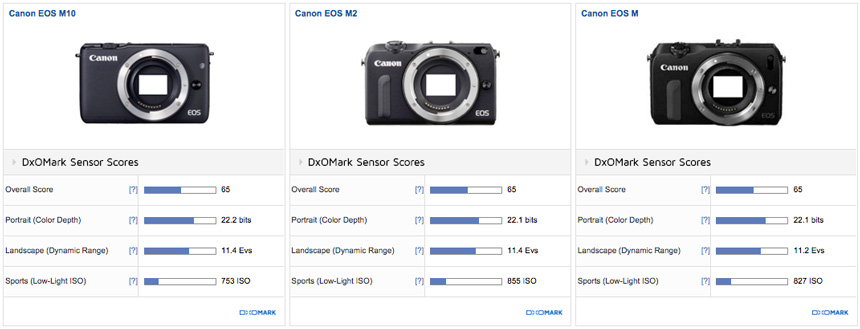
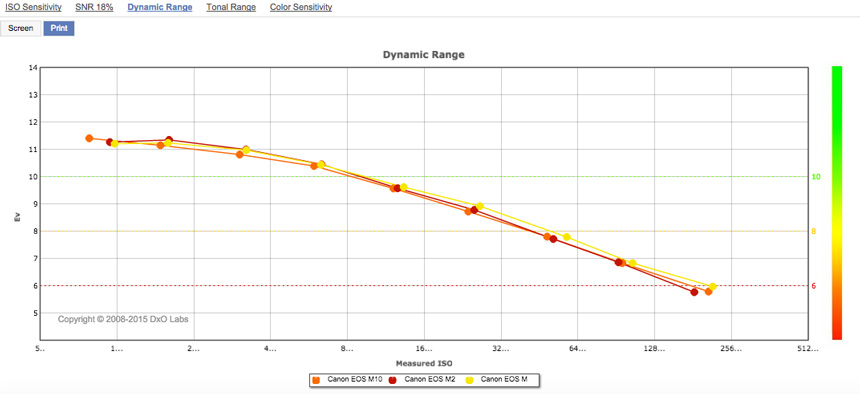

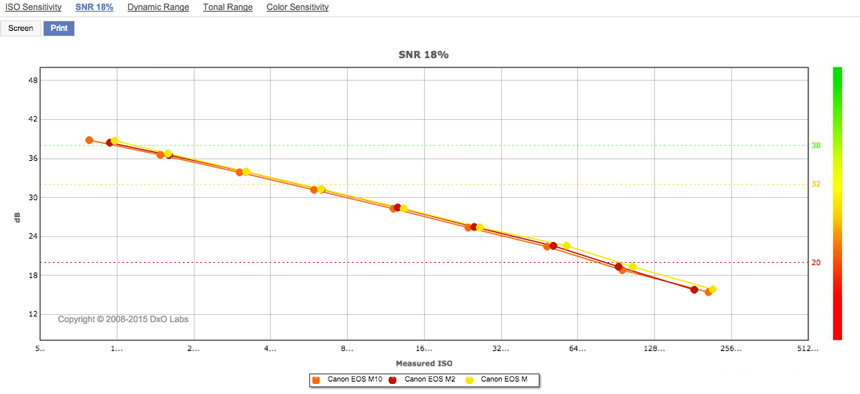
DXOMARK encourages its readers to share comments on the articles. To read or post comments, Disqus cookies are required. Change your Cookies Preferences and read more about our Comment Policy.